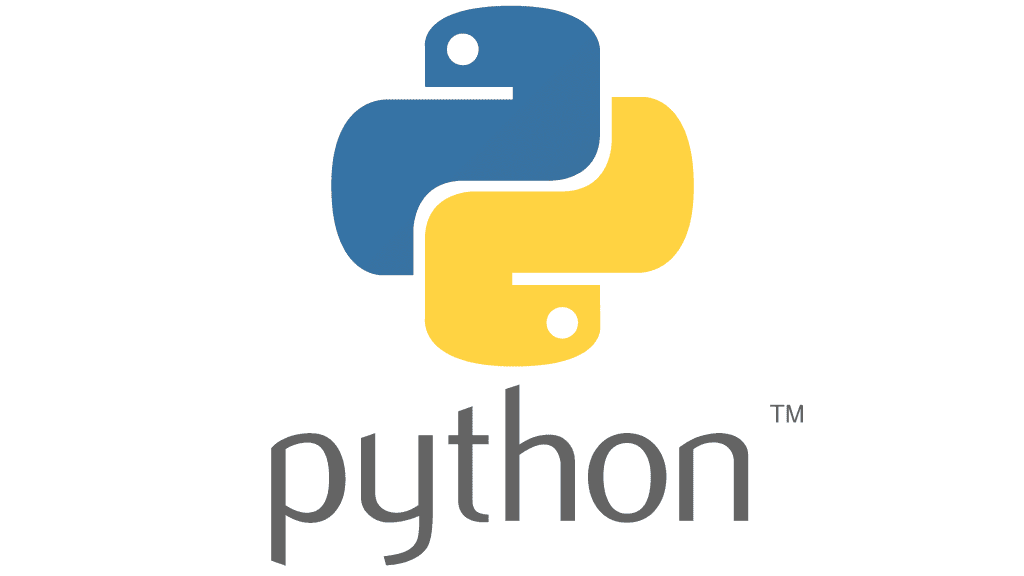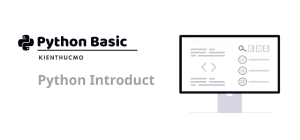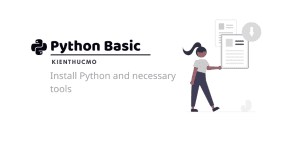In an era of rapid technological advancement, knowing and using a programming language is no longer a privilege reserved for professional programmers. Many languages have been created to serve different purposes, but Python stands out for its simplicity, flexibility, and wide range of applications.
Python is not only a tool for building large software systems but also a reliable “assistant” in modern life. From office work, studying, and research to personal entertainment, Python can help people work more efficiently, save time, and enhance creativity.
In this article, we will explore the familiar and practical applications of Python in daily life.

1. Automating Daily Tasks
One of the reasons many people turn to Python is its ability to automate tasks. Simple but repetitive jobs often take up a lot of time, and this is where Python truly shines.
- File and Data Management: With just a few lines of code, you can rename multiple files, move them, or organize them into appropriate folders. If you use Excel, Python can quickly read, process, and export data, replacing hours of manual work.
- Automated Email Sending and Scheduling: You can write scripts to
- Data Collection from the Web (Web Scraping): Python can automatically download content from websites, serving
A typical example: instead of copying and pasting data 100 times, you just need to run a few lines of code and wait a few seconds to finish. This saves hours of work and minimizes human errors.
2. Support for Learning and Research
Python is not only a working tool but also a reliable companion in learning and research.
- Data Analysis: With libraries like Pandas and NumPy, students can easily process data from experiments, surveys, or statistics.
- Visualization: Libraries like Matplotlib and Seaborn allow the creation of dynamic charts, supporting the presentation of scientific reports or theses.
- Mathematical and Physical Simulations: Python can simulate object motion, solve systems of equations, or visualize complex functions—things that are difficult to achieve with manual calculations.
Not limited to the educational environment, scientific researchers also use Python to handle large data sets in fields such as biology, meteorology, and sociology. The simplicity of the syntax helps them focus on analysis instead of worrying too much about programming details.
3. Artificial Intelligence (AI) and Machine Learning Technology
When it comes to AI and Machine Learning, Python is almost the default choice.
- Popular libraries: TensorFlow, PyTorch, Scikit-learn, Keras.
- Applications: image recognition, natural language processing, building chatbots, data trend prediction.
Everyday conveniences are often powered by Python: movie recommendations on Netflix, music on Spotify, products on Amazon, or YouTube. Behind this convenience are millions of lines of Python code running in machine learning models.
4. Web and Application Development
Python is also one of the popular languages for web and application development.
- Django: a powerful framework that provides full features to build e-commerce systems, social networks, or large data management platforms.
- Flask and FastAPI: flexible and lightweight, suitable for small projects or service APIs.
Many startups choose Python to build MVPs (Minimum Viable Products) thanks to its fast development speed, ease of maintenance, and scalability. Websites like Instagram, Pinterest, and online learning applications all use Python on the backend.
5. Entertainment and Personal Creativity
Python not only serves serious work but also opens doors to creativity and entertainment.
- Small game development: With Pygame, users can create simple 2D games, learning programming while unleashing their creativity.
- Creating entertainment bots: Bots that automatically play games, respond to messages on social media, or organize personal music playlists.
- Personal applications: Python can be used to create digital journals, manage expenses, or even build personal note-taking apps.
The special thing is that even beginners can quickly create products with a personal touch.
6. Applications in Professional Work
Python goes beyond general use and plays an important role in many specialized fields:
- Economics – Finance: analyzing the stock market, building models to predict stock prices.
- Healthcare: assisting in medical image analysis, detecting cancer cells from image data.
- Media – Journalism: processing news data, detecting media trends, analyzing public reactions.
- Engineering – IoT: programming robots, developing smart home systems on the Raspberry Pi platform.
Thanks to its ability to integrate with many libraries and hardware devices, Python has become a versatile tool in both research and production.
7. Community and Resources
One of the factors that makes Python powerful is its global user community.
- Millions of developers share libraries, tools, and scripts for free.
- Forums, online courses, and tutorials are always available to support beginners.
- Python is an open-source language, meaning anyone can contribute, improve, and leverage the power of the community.
As a result, users can always find solutions for most practical needs—from small scripts to complex systems.
8. Conclusion
From the examples above, it is clear that Python is not just a tool for professional programmers. It is truly a friendly digital assistant, helping us work faster, smarter, and more creatively.
Whether you are a student, office worker, researcher, or specialized engineer, Python offers practical value. From automating daily tasks and analyzing study data to building AI systems, Python has become a bridge between technology and everyday life.
In the digital era, getting familiar with Python is like equipping yourself with a “master key” that opens countless opportunities—from saving time and boosting productivity to turning personal ideas into reality.
9. References
- Python Software Foundation – Python Official Website: https://www.python.org
- Introduction to Python Programming – OpenStax: https://kienthucmo.com/introduction-to-python-programming/
- Van Rossum, G., & Drake, F. L. (2009). The Python Language Reference Manual. Network Theory Ltd.
- Lutz, M. (2013). Learning Python (5th Edition). O’Reilly Media.
- Sweigart, A. (2015). Automate the Boring Stuff with Python. No Starch Press.
- Django Software Foundation – Django Project: https://www.djangoproject.com
- Flask Project – Flask Web Framework: https://flask.palletsprojects.com
- McKinney, W. (2017). Python for Data Analysis (2nd Edition). O’Reilly Media.
- Scikit-learn Documentation – https://scikit-learn.org
- Real Python – Python Tutorials: https://realpython.com



